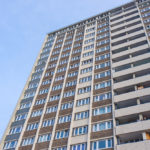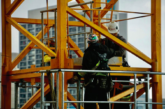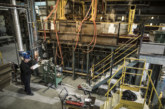 Current proposals to ban combustible cladding don’t go far enough, says Allison Whittington, Head of Housing at Zurich Municipal.
Current proposals to ban combustible cladding don’t go far enough, says Allison Whittington, Head of Housing at Zurich Municipal.
The Government’s recent announcement confirming a ban on the use of combustible materials on certain buildings above 18 metres is a welcome step in the right direction but, here at Zurich, we believe it does not go far enough. Indeed, as these proposals stand, a fire at lower levels could very easily negatively affect the level of safety provided to the overall building and significantly increase the potential for extensive and uncontrolled fire spread.
Following this announcement, we have seen Steve Reed MP and a group of his Labour colleagues issue an official letter, in which they called for the ban on combustible cladding to be extended to all heights of both residential and non-residential buildings, and we are fully supporting it. This is because our job is not just to pay claims, but also to raise awareness of and help manage risks.
As the Government is under increased pressure to meet the housing demand, it is very important that we have a balanced debate about how we can build safe and resilient homes in the UK. The height of 18 metres seems to be an artificially set cut off point, as the risks associated with combustible cladding remain the same, regardless of the height of the building.
Non-combustible materials
Wherever there are materials available that can perform the function and are non-combustible, they should be used on all buildings as a priority. This is of particular importance where there is an inability to fight a fire from outside of the property, such as in high-rise buildings. Indeed, whilst we accept that the risk to life is higher within residential buildings, there remains an unacceptable risk to occupiers of other premises as well, which could be avoided by adopting the same principles.
Moreover, in recent years there have been several examples of high-rise office type occupancies being adapted and subject to change of use to residential occupancy. To limit the ban to high-rise residential would, therefore, lead to future difficulties if a building is subject to change of use, i.e. change from office to residential, or from student accommodation to partial residential type use. With pressure to produce more homes to meet the housing demand in the UK, conversions are being increasingly encouraged, so we need to ensure all types of buildings are constructed with safety and resilience in mind. Therefore, it is essential that any ban applies to all buildings of any height to help ensure that future occupancy changes do not result in reduced or inconsistent safety standards.
We also firmly believe that a safer and more straightforward rule would offer robust future-proofing and assist in reducing ambiguity and complexity surrounding different performance requirements for only slightly differing occupancies. We need to raise awareness and establish accountability throughout all phases from planning and design, through to construction and maintenance, and ensure that people are not exploiting current Building Regulations, which are not fit for purpose and need a major overhaul to keep up with industry and safety requirements.









